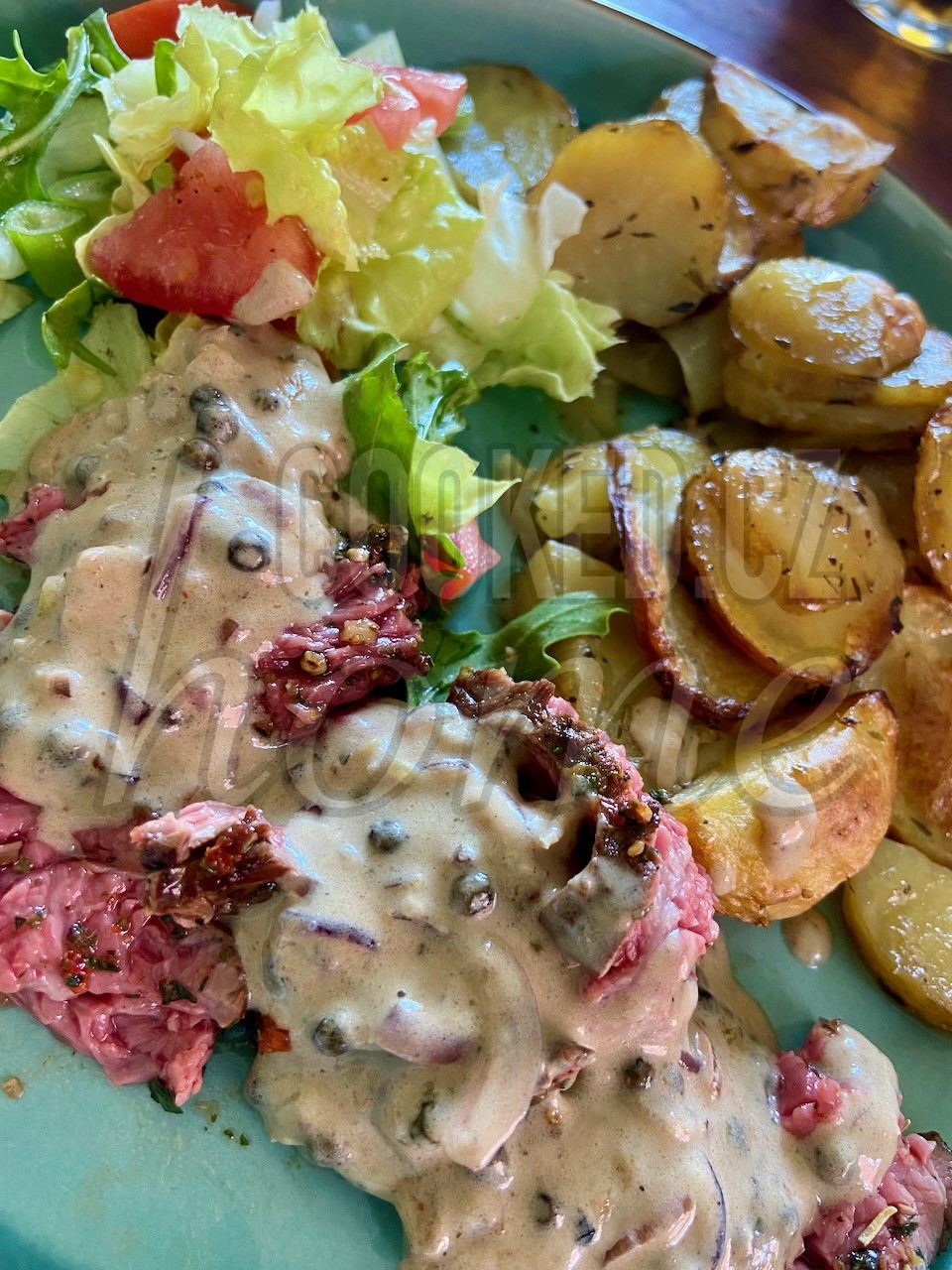The history of Green Peppercorn Sauce can be traced back to French cuisine, specifically the classic sauce known as "sauce au poivre". While the exact origins of the sauce are not well-documented, it is believed to have emerged in the late 19th century or early 20th century in France. The use of green peppercorns in sauce provided a unique twist to the traditional recipe, offering a fresher and more vibrant taste. The green peppercorns are often soaked or brined before use to enhance their flavor and soften their texture. The sauce is typically prepared by sautéing shallots or onions in butter, then adding cream, stock, and green peppercorns. The mixture is simmered until the flavors meld together, resulting in a velvety sauce with a delightful peppery kick.
Ingredients

Directions
- Heat the olive oil in a medium skillet over medium heat.
- Sauté shallots, green peppercorns on the half of the butter.
- Add brandy and cook until the alcohol has burned off, about 1 minute.
- Incorporate the flour and cook, stirring, until it has been absorbed.
- Add the beef broth and increase the heat to medium-high.
- Simmer, stirring constantly, until the sauce has reduced by half, 3 to 5 minutes.
- Add the cream and reduce the heat to medium-low.
- Simmer until the sauce has thickened, about 5 minutes.
- Stir in the remaining butter to smooth out sauce.
- Season with salt. Serve with steak, pork or chicken.